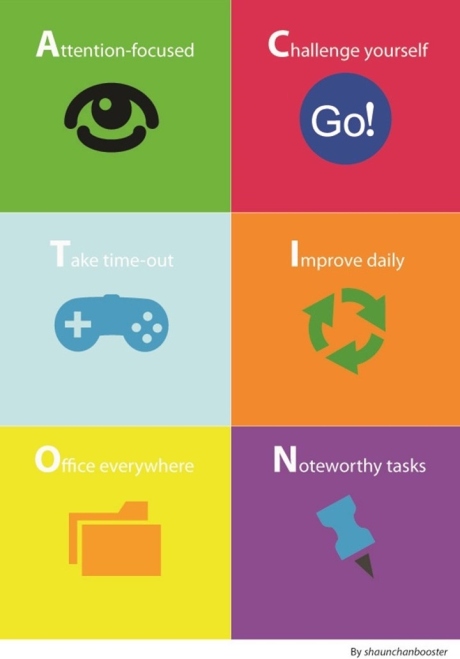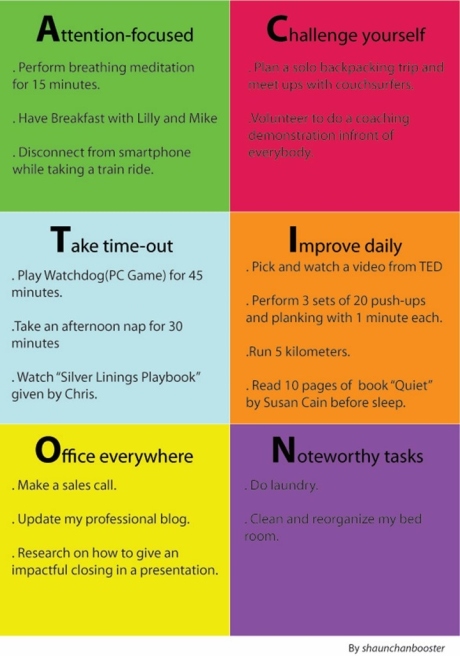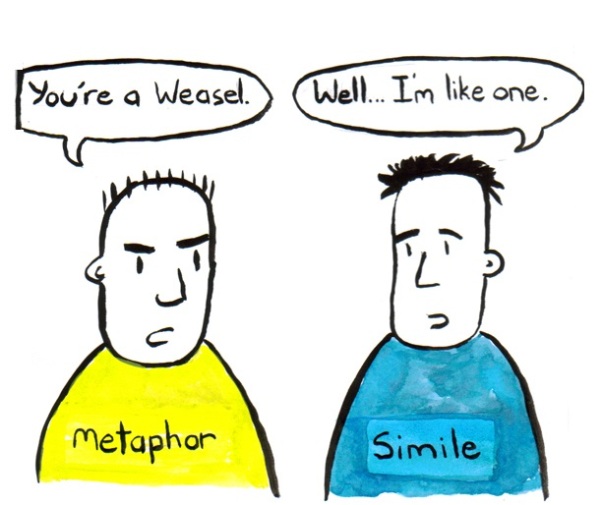We tend to be distracted by social media news feeds. We are bombarded by attention-seekers, noises and advertisement anywhere and everywhere we go…except in our sleep. We are drowned by incoming tasks from the office, school or even home. The revolution of technology has made it easy for us humans to multitask but the irony is, we get so much yet do so little.
Does technology actually increases or hinders our daily productivity? Not if we know how to manage it effectively.
I was having breakfast with a close friend of mine ChesterKester and we started talking about our own productivity. Our finding was, we may not be as productive as we seemed to be. We realized that we aren’t utilizing enough every single hour of our life to increase our life potential.
So we brainstormed, innovate and came out with a productivity model called A.C.T.I.O.N
Here’s the 6-part of being productive without loosing track of what you set at the beginning of your day. So my advice would be: wake up earlier everyday, sit down for 15 minutes to organize your day based on this model. You’ll find an example at the end of this article.
A.C.T.I.O.N explained: we believe that there are 6 areas you should take notice in order to create a productive and life-defining to-do-list.
1. A- attention-focused
Sometimes, there is a need for us to disconnect (from technology) to connect. Pay attention to your surroundings, people around you, evoke your senses. Be in the moment. Live in the moment. Studies have shown that mindfulness can stimulate our brain for clearer thoughts. So when you network, make sure you network and think nothing else. When you mediate, make sure you meditate and think nothing else.
2. C- challenge yourself
Find something challenging, get out of your comfort zone, then do it. Life is supposed to be exciting. Pump in a little bit of adrenaline into your life experience. Do things that scare the shit out of you. That’s when you learn and grow.
3. T- take timeout
Sometimes, we can’t do stuff because simply we feel that we can’t. In many cases, this situation comes because of fatigue of our brain. Do you find yourself in a situation when you try to read something but your brain doesn’t process what you read? Then It’s time for you to take timeout. The experts suggest that our bodies may regularly tell us to take a break every 90 minutes. So you could rest for 10 minutes or more depending on your daily agenda before getting back into your work. Do something you like and simultaneously that could rest your mind. It will not only boosts your productivity, but also your creativity.
4. I – improve daily
There are 2 ways to improve yourself daily. First is to learn something new to gain fresh perspectives and second, it is to practice certain skill sets constantly and consistently. In the book Outliers, author Malcolm Gladwell says that it takes roughly ten thousand hours of practice to achieve mastery in a field! Practice isn’t the thing you do once you’re good. It’s the thing you do that makes you good. Improving oneself may be tedious and it’s not an overnight process. It is continuous. So my advice would be: make it small and easy enough for you to achieve then practice it daily as you increase the level of difficulty gradually each day. You’ll see results that way and it motivates you to keep moving.
6. O – offices everywhere
Offices are everywhere nowadays. We have entrepreneurs, freelancers, employees, housewives and sales person who work from any corners of the world like coffee place, home or even by the beach. When i’m talking about work, it could be anything. It could be your office work, your creative work or your part-time work. For example writing this blog (for me), compose a music, update your manager about the latest progress of a project etc. So keep a to-do-list for your work to progress and stay on the right track.
7. N – noteworthy tasks
Sometimes we are bogged down by some little but noteworthy tasks like paying bills, ironing shirts, cleaning desk. We just want to get it done as soon as possible and we do not want to put it until tomorrow.
Here I will show you how it is done. This is how my A.C.T.I.O.N plan would look like based on my daily activities.
Now my challenge is to complete all the tasks written in this A.C.T.I.O.N paper not only for today but for days to come. Please note that your A.C.T.I.O.N plan may vary everyday. That’s why it is so important for us to constantly look at it, check and update.
Feel free to use this productivity tool. Do drop me a comment here if you think it is useful. 🙂
For your productivity success,
Shaun Chan








